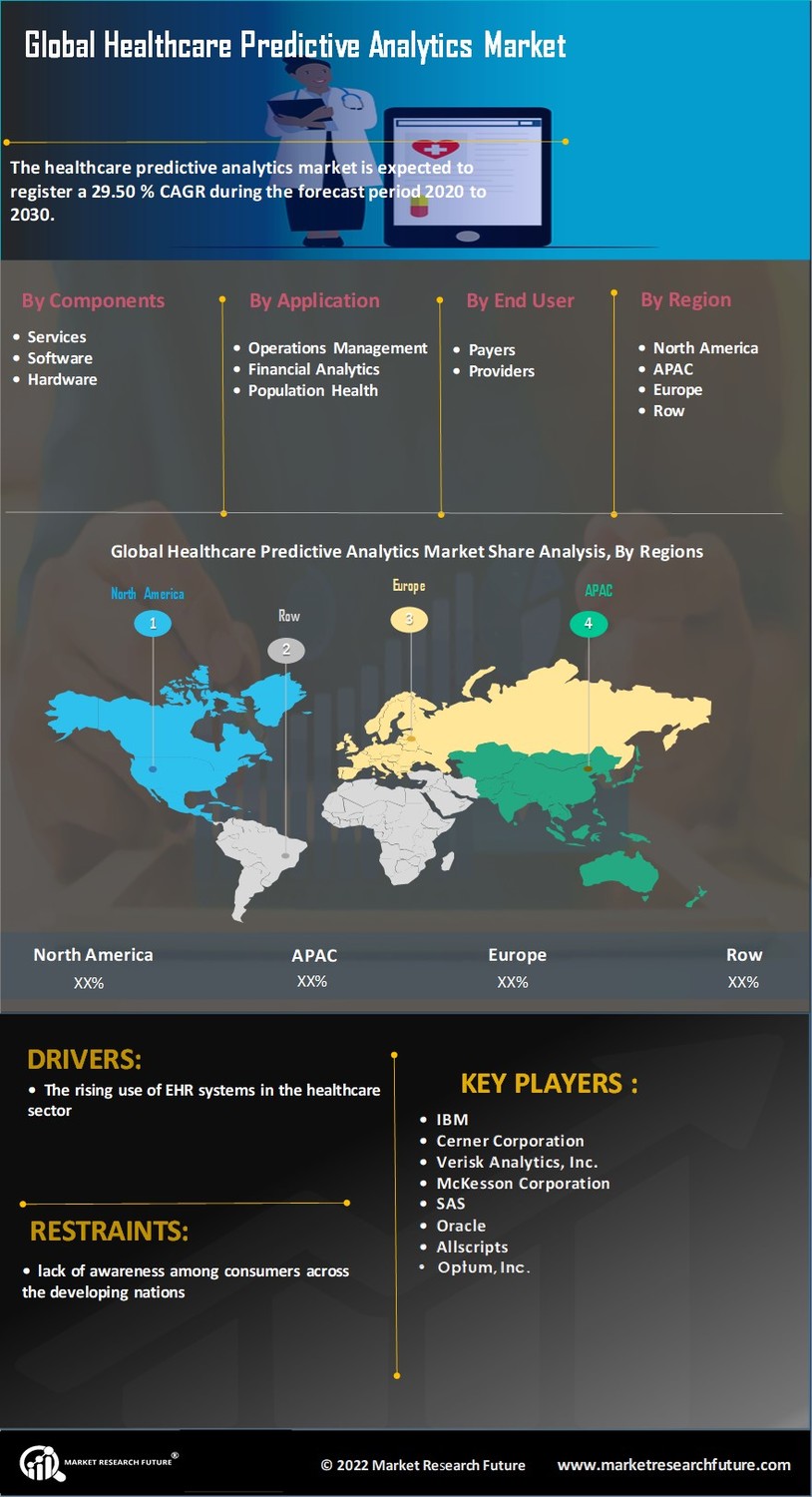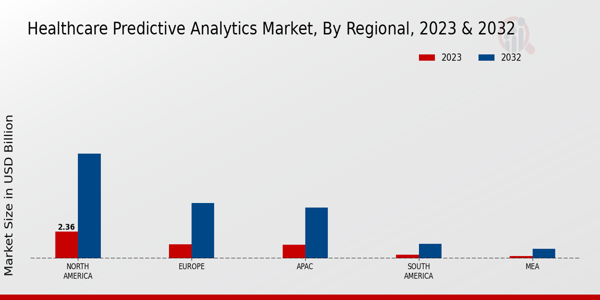Growing Focus on Preventive Healthcare
The Healthcare Predictive Analytics Market is significantly influenced by the growing emphasis on preventive healthcare. As healthcare systems shift from reactive to proactive approaches, predictive analytics emerges as a crucial tool in identifying at-risk populations and implementing preventive measures. By analyzing historical data and identifying patterns, healthcare providers can anticipate potential health issues and intervene early. This proactive stance not only improves patient health outcomes but also reduces overall healthcare costs. The market is projected to expand as more organizations recognize the importance of preventive strategies. With an increasing number of healthcare providers investing in predictive analytics solutions, the industry is likely to see a rise in the development of tailored interventions aimed at specific patient populations.
Advancements in Technology and Infrastructure
Technological advancements play a pivotal role in shaping the Healthcare Predictive Analytics Market. The integration of sophisticated technologies such as machine learning, big data analytics, and cloud computing is revolutionizing the way healthcare data is processed and analyzed. These innovations enable healthcare providers to harness vast amounts of data from diverse sources, including electronic health records and wearable devices. As a result, predictive analytics tools are becoming more accessible and user-friendly, facilitating their adoption across healthcare organizations. The market is expected to witness substantial growth, with projections indicating a valuation exceeding 20 billion by 2026. This technological evolution not only enhances the accuracy of predictions but also empowers healthcare professionals to deliver personalized care, thereby improving patient satisfaction and outcomes.
Regulatory Support and Compliance Initiatives
Regulatory support is a driving force in the Healthcare Predictive Analytics Market, as governments and regulatory bodies increasingly recognize the importance of data analytics in improving healthcare delivery. Initiatives aimed at enhancing data interoperability and promoting the use of predictive analytics are gaining traction. For instance, regulations that encourage the sharing of health data among providers facilitate the development of more robust predictive models. This regulatory landscape not only fosters innovation but also ensures that healthcare organizations comply with standards that enhance patient safety and care quality. As a result, the market is likely to experience accelerated growth, with stakeholders actively seeking solutions that align with regulatory requirements while maximizing the benefits of predictive analytics.
Rising Demand for Data-Driven Decision Making
The Healthcare Predictive Analytics Market is experiencing a notable surge in demand for data-driven decision-making processes. Healthcare organizations are increasingly recognizing the value of leveraging data analytics to enhance operational efficiency and improve patient outcomes. According to recent estimates, the market is projected to grow at a compound annual growth rate of approximately 25% over the next five years. This growth is largely attributed to the need for healthcare providers to make informed decisions based on real-time data analysis. As healthcare systems strive to optimize resource allocation and reduce costs, predictive analytics tools are becoming indispensable. The ability to forecast patient admissions, manage chronic diseases, and streamline clinical workflows is driving the adoption of predictive analytics solutions across various healthcare settings.
Increased Investment in Healthcare IT Solutions
Investment in healthcare IT solutions is a significant driver of the Healthcare Predictive Analytics Market. As healthcare organizations strive to modernize their operations, there is a marked increase in funding directed towards advanced analytics tools and technologies. This trend is fueled by the recognition that predictive analytics can lead to improved patient care, operational efficiency, and cost savings. Recent data suggests that healthcare IT spending is expected to reach over 500 billion by 2025, with a substantial portion allocated to predictive analytics solutions. This influx of investment not only supports the development of innovative analytics platforms but also encourages collaboration among stakeholders, including technology vendors and healthcare providers, to create integrated solutions that address the evolving needs of the industry.


















Leave a Comment